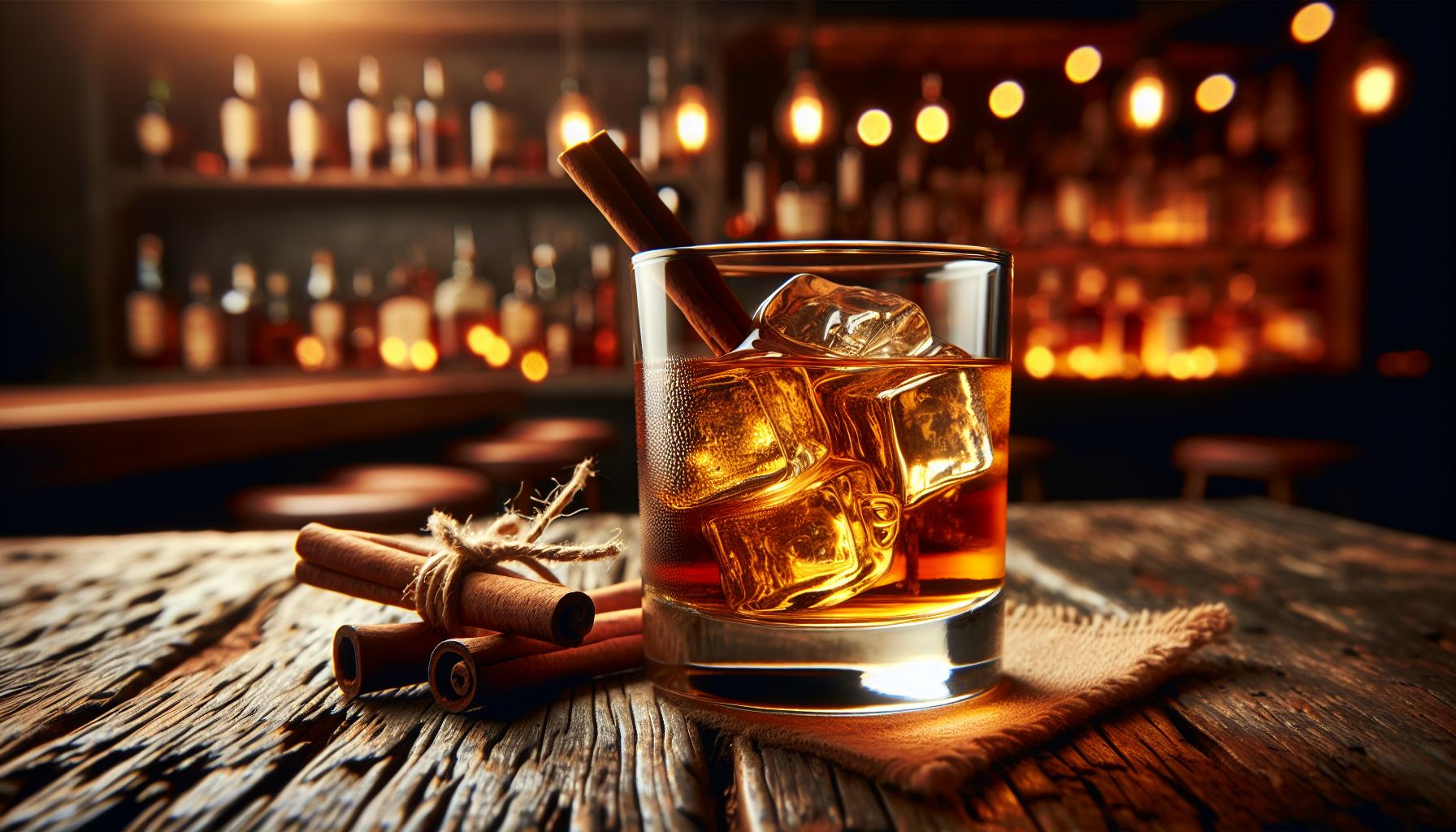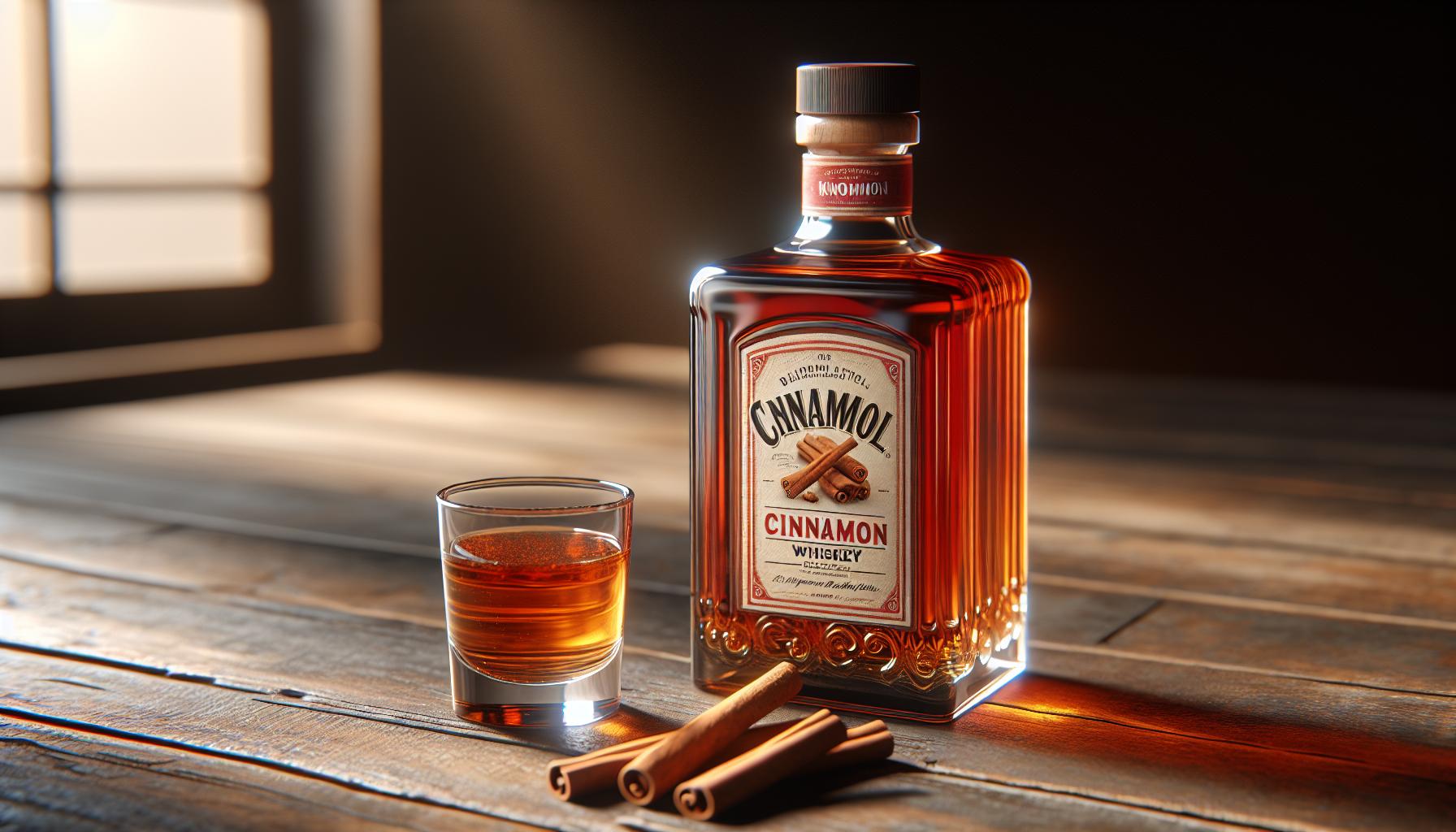Ever wondered what liquid courage does to your waistline? Fireball whiskey has become a party staple, but its nutritional impact remains a mystery to many shot-taking enthusiasts. This cinnamon-flavored phenomenon isn’t just burning throats – it’s also raising eyebrows in the health and fitness community.
Between its sweet kick and alcoholic punch, Fireball packs more than just a spicy surprise. While most people don’t exactly reach for a shot of Fireball thinking about their macros, understanding what’s in that devilish drink might make you think twice before ordering that next round. Whether you’re counting calories or just curious about what’s fueling those memorable (or not so memorable) nights, it’s time to unlock the truth behind this fiery spirit’s nutritional profile.
Fireball Nutrition
Fireball Whisky combines Canadian whisky with natural cinnamon flavoring to create its distinctive sweet-spicy taste profile. This popular spirit emerged from Canada in the 1980s, gaining widespread popularity in the United States during the 2010s.
Key Ingredients
Fireball contains a blend of essential components:
- Canadian whisky serves as the base spirit
- Natural cinnamon flavoring creates the signature taste
- Propylene glycol acts as a flavor carrier
- Sweeteners enhance the palatable taste
- Natural caramel coloring provides the amber hue
- Filtered water balances the mixture
The manufacturing process combines these ingredients under strict quality control measures to maintain consistency across batches.
Alcohol Content
Fireball Whisky contains 33% alcohol by volume (ABV), making it lighter than traditional whiskeys that typically range from 40-50% ABV. Here’s a comparative breakdown:
| Spirit Type | ABV % |
|---|---|
| Fireball Whisky | 33% |
| Traditional Whiskey | 40-50% |
| Canadian Whisky | 40% |
The lower alcohol content contributes to its smooth drinking experience, making it a popular choice for shots or mixed drinks. The cinnamon flavor masks the alcoholic bite typically associated with stronger spirits.
Nutritional Facts About Fireball


Fireball whiskey contains significant nutritional components that impact dietary considerations. The drink’s sweet-spicy profile contributes to its distinct nutritional makeup, affecting both caloric intake and sugar levels.
Calories and Carbohydrates
A standard 1.5-ounce shot of Fireball whiskey contains 108 calories, primarily derived from alcohol and added sweeteners. The carbohydrate content reaches 11 grams per serving, making it higher in carbs compared to traditional whiskeys which typically contain 0 grams. Each 750ml bottle provides approximately 16 servings, totaling 1,728 calories when consumed in full. The carbohydrate content stems mainly from the proprietary sweetener blend used to create its signature taste profile.
| Serving Size | Calories | Carbohydrates |
|---|---|---|
| 1.5 oz shot | 108 | 11g |
| 750ml bottle | 1,728 | 176g |
Sugar Content
Fireball contains 11 grams of sugar per 1.5-ounce serving, equivalent to nearly 3 teaspoons of added sugar. The sweetness comes from a combination of natural sugars and artificial sweeteners in the proprietary blend. A 750ml bottle contains approximately 176 grams of total sugar content. The sugar profile includes both natural sweeteners from the whiskey base and added sugars that enhance the cinnamon flavor experience.
| Measurement | Sugar Content |
|---|---|
| Per shot | 11g |
| Per bottle | 176g |
| Sugar equiv. | 3 tsp/shot |
Health Considerations


Fireball whiskey presents several health implications due to its unique combination of alcohol content and high sugar levels. Understanding these effects helps consumers make informed decisions about their consumption patterns.
Impact on Blood Sugar
The elevated sugar content in Fireball whiskey significantly affects blood glucose levels. Each 1.5-ounce shot contains 11 grams of sugar, creating rapid spikes in blood sugar followed by subsequent crashes. This glucose fluctuation impacts insulin response more severely than traditional whiskeys. The combination of sugar and alcohol puts additional stress on the pancreas, as it processes both substances simultaneously. People with diabetes or pre-diabetes face increased risks from these dramatic blood sugar variations.
- Increased heart rate from sugar and alcohol combination
- Enhanced dehydration due to sugar content
- More severe hangovers from sugar-induced inflammation
- Delayed alcohol metabolism in the liver
- Greater risk of stomach irritation from cinnamon oils
Comparing Fireball to Other Spirits


Fireball whiskey presents distinct nutritional differences when compared to traditional spirits. These variations stem from its unique blend of ingredients including cinnamon flavoring sweeteners.
Caloric Differences
Fireball contains 108 calories per 1.5-ounce shot, surpassing traditional spirits in caloric content. Standard vodka provides 97 calories per shot, while gin contains 98 calories. Rum delivers 97 calories, tequila offers 98 calories per shot. Traditional unflavored whiskey contains 105 calories per shot.
| Spirit Type | Calories per 1.5 oz shot |
|---|---|
| Fireball | 108 |
| Vodka | 97 |
| Gin | 98 |
| Rum | 97 |
| Tequila | 98 |
| Traditional Whiskey | 105 |
Sugar Content Comparison
Fireball’s 11 grams of sugar per shot distinguishes it from most traditional spirits. Pure vodka, gin, whiskey, rum tequila contain 0 grams of sugar. The sugar content in Fireball matches many flavored liqueurs such as Kahlua (11g) Baileys Irish Cream (11g).
| Spirit Type | Sugar Content (g) per 1.5 oz |
|---|---|
| Fireball | 11 |
| Traditional Spirits | 0 |
| Kahlua | 11 |
| Baileys Irish Cream | 11 |
| Cointreau | 7 |
| Grand Marnier | 8 |
Tips for Healthier Drinking
Limiting Fireball consumption to 1-2 shots per occasion reduces sugar intake. Alternating between alcoholic drinks and water maintains hydration while consuming Fireball’s high sugar content.
Selecting lower-calorie mixers enhances the drinking experience:
- Mix with unsweetened seltzer water instead of sugary sodas
- Combine with sugar-free cranberry juice for added flavor
- Use fresh lime juice to cut sweetness without extra calories
Practicing portion control minimizes health impacts:
- Pour precise 1.5-ounce shots using a measured shot glass
- Track total drinks consumed throughout the evening
- Set a predetermined drink limit before social occasions
Strategic food pairing helps moderate alcohol absorption:
- Consume protein-rich foods before drinking
- Choose complex carbohydrates as pre-drinking snacks
- Avoid salty foods that increase thirst
Following these timing guidelines optimizes metabolic response:
- Space drinks 60 minutes apart
- Consume food 30 minutes before the first drink
- Stop drinking 2 hours before bedtime
Supplementing with these nutrients supports liver function:
| Nutrient | Recommended Daily Amount |
|---|---|
| Vitamin B1 | 1.2 mg |
| Vitamin B6 | 1.3 mg |
| Vitamin C | 90 mg |
| Magnesium | 400 mg |
These modifications create a balanced approach to enjoying Fireball while maintaining health consciousness. Incorporating electrolyte-rich beverages between drinks supports optimal hydration levels during consumption.
Understanding Fireball whiskey’s nutritional profile is crucial for making informed drinking choices. While its sweet cinnamon flavor makes it an appealing choice the high sugar and calorie content sets it apart from traditional spirits. By following mindful consumption practices such as portion control hydration and strategic food pairing anyone can still enjoy Fireball while maintaining their health goals.
Remember that moderation is key and being aware of what’s in your drink empowers better decision-making. Smart choices about when and how to enjoy Fireball can help balance social enjoyment with nutritional awareness.

